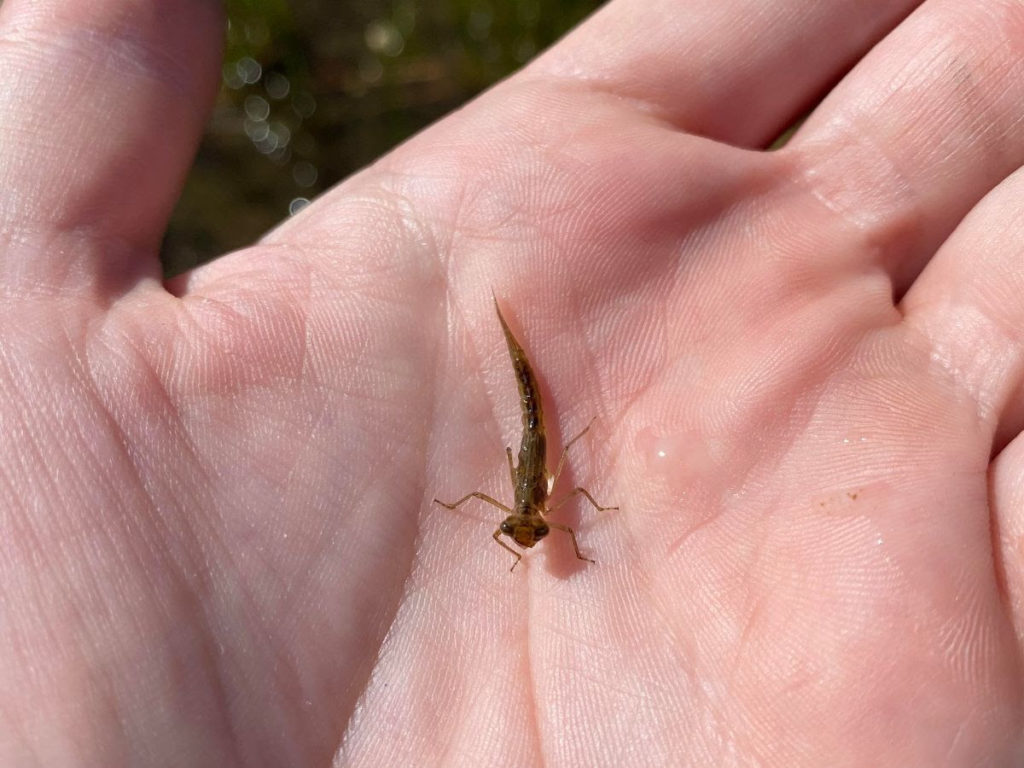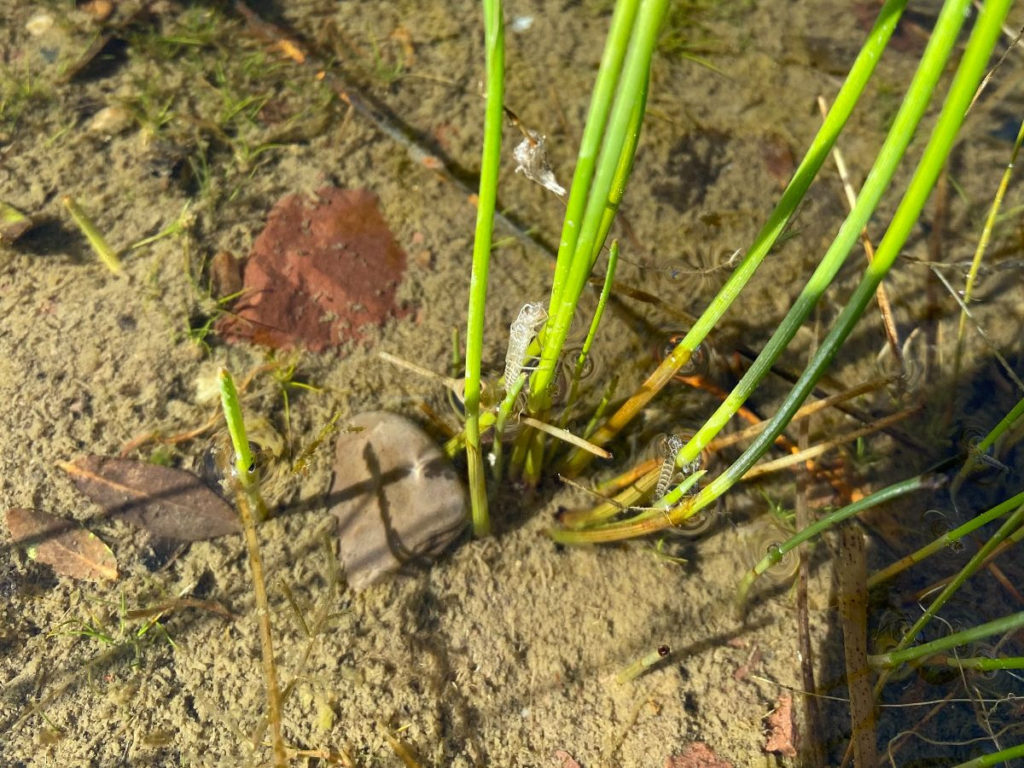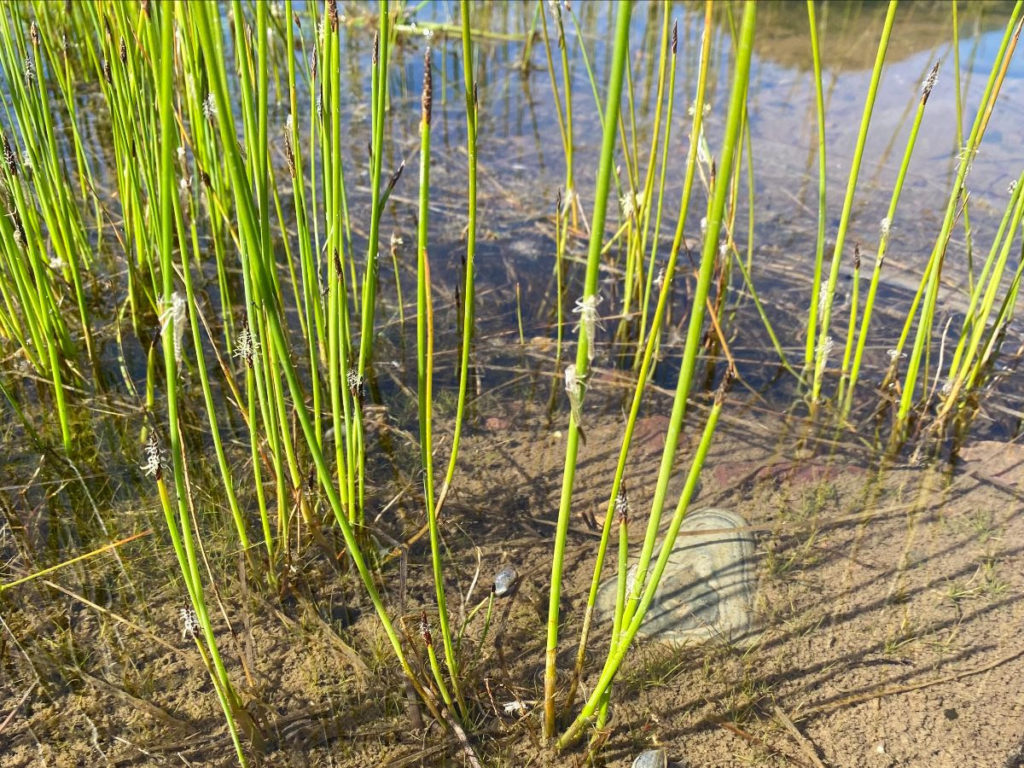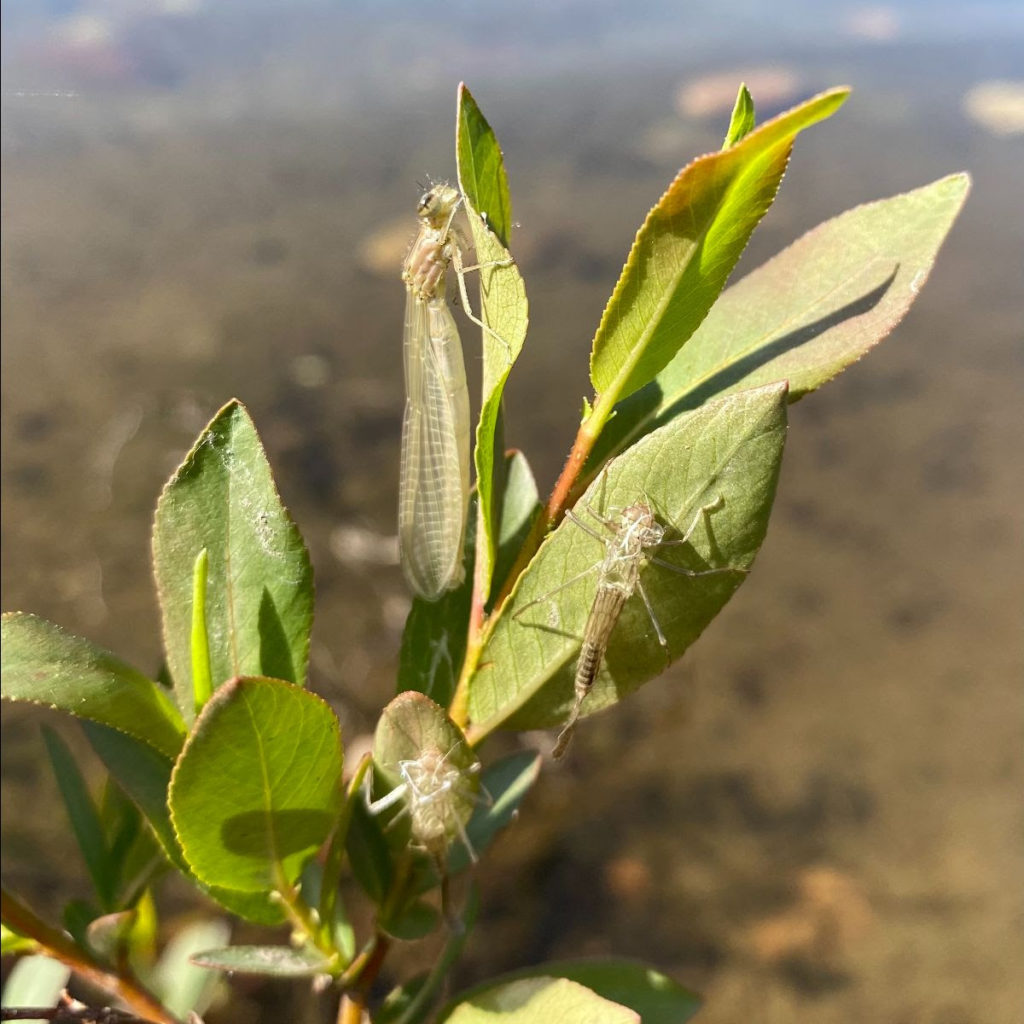Welcome Back to the Field!
Field season continues for MBHI, and this week, I had the opportunity to revisit our field site at Rock Creek for the second year of insect abundance sampling. Since we have two sites set up this year, and the collection bottles have to spend at least 72 hours in the field, I had a little time to kill in between sampling sites to explore. One great aspect of our Rock Creek site is a small pond about 100m from our trap, and I couldn’t resist poking around in the mud a little.

I squatted by the water’s edge and waited for a bit until I saw movement, and then I noticed it: A damselfly larva. Damselflies belong to the order Odonata, the same as dragonflies. And while some may think the two common names (damselfly and dragonfly) are interchangeable and colloquial terms, the opposite is true. Damselfly refers to a suborder of Odonates that are smaller, slimmer, and hold their wings alongside their bodies when at rest. Dragonflies are large and bulky, and hold their wings out to the side. All odonates are predatory and spend their nymphal stages in aquatic environments. The presence of damselfly larvae in this paritcular pond signifies a healthy ecosystem.

Already tickled at my find, I scanned further out to spot any other aquatic insect movement but was stopped short once my gaze landed on some plants. There, I noticed the husk of a damselfly larva. When damselflies and dragonflies are ready to undergo their final molt, they will crawl out of the water and find a vertical surface to hang from. They emerge and transform into winged adults; much in the same way that cicadas emerge from the ground to molt into their winged form.

Glancing around, I noticed hundreds of empty damselfly husks clinging to the plants around the pond. But no adult damselflies skimming the surface. So where were they? They couldn’t be far; very few species of damselflies migrate. And then…

Voila! A freshly molted damselfly adult. When the adult first emerges, it looks ghostly, but as the exoskeleton sclerotizes (or hardens), the colors will become more vibrant.
We may be missing out on cicada season east of the Rockies, but it just goes to show that nature will always provide a spectacular emergence; you just have to know where to look.
Until next time, thanks for visiting the field!
Bug Wrangler Brenna
brenna@missoulabutterflyhouse.org
Want to revisit a previous Notes from the Lab issue? Check out our archive! Do you want to request a subject for an upcoming issue? Email me at the address above and put “Notes from the Lab” in the subject line.